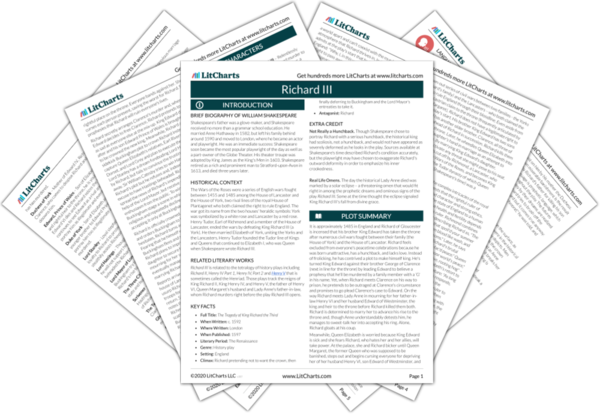Welcome to the LitCharts study guide on William Shakespeare's Richard III. Created by the original team behind SparkNotes, LitCharts are the world's best literature guides.
Richard III: Introduction
Richard III: Plot Summary
Richard III: Detailed Summary & Analysis
Richard III: Themes
Richard III: Quotes
Richard III: Characters
Richard III: Symbols
Richard III: Literary Devices
Richard III: Theme Wheel
Brief Biography of William Shakespeare

Historical Context of Richard III
Other Books Related to Richard III
- Full Title: The Tragedy of King Richard the Third
- When Written: c. 1592
- Where Written: London
- When Published: 1597
- Literary Period: The Renaissance
- Genre: History play
- Setting: England
- Climax: Richard pretending not to want the crown, then finally deferring to Buckingham and the Lord Mayor's entreaties to take it.
- Antagonist: Richard
Extra Credit for Richard III
Not Really a Hunchback. Though Shakespeare chose to portray Richard with a serious hunchback, the historical king had scoliosis, not a hunchback, and would not have appeared as severely deformed as he looks in the play. Sources available at Shakespeare's time described Richard's condition accurately, but the playwright may have chosen to exaggerate Richard's outward deformity in order to emphasize his inner crookedness.
Real Life Omens. The day the historical Lady Anne died was marked by a solar eclipse – a threatening omen that would fit right in among the prophetic dreams and ominous signs of the play Richard III. Some at the time thought the eclipse signaled King Richard III's fall from divine grace.












